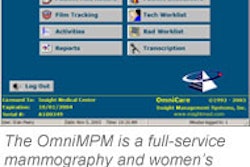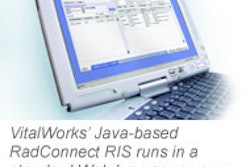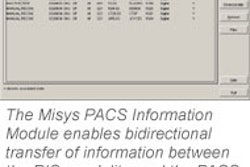It’s been said that first impressions are lasting impressions. For a radiology department providing outpatient services, the first impressions of referring physicians and their patients are formed when appointments are scheduled. If customers have to wait too long for their call to be answered, wait too long to get an appointment, or undergo a difficult and lengthy process to book one, chances are their impressions will be negative.
Because the practice of radiology relies almost exclusively on its referral base, and the competition for those referrers is fierce, it behooves a group to have an efficient, effective, and thorough scheduling process in place.
"We’re taking an average of 350-400 scheduling calls a day and schedule an average of 670 exams a day between inpatient, outpatient, and the emergency department," said Sally Howell of Yale New Haven Hospital in New Haven, CT.
Howell recounted her institution’s experience with scheduling process improvement at the 2003 American Healthcare Radiology Administrators conference in Anaheim, CA.
"Scheduling is very challenging and it’s very complex. Every call you get is different, whether it’s a radiologist, a referring physician, or a patient," she said.
Howell polled the schedulers at Yale New Haven and found six areas of dissatisfaction among the staff. These were:
- Unavailability of exam slots
- Waiting on the phone for radiologist approval
- No manual to follow
- Exam resources too specific
- Complexity of exams to be scheduled
- Not enough staff
Howell said that some of the items resulted from the facility’s implementation of its RIS.
"For example, in nuclear medicine, some of these procedures are four- or five-part studies and on your information system you’re trying to build those so you can do it as one composite study. So you book one, you book two, and all of sudden you have no slots for three, four, and five, so you’re starting all over again," she said.
Six Sigma
Howell incorporated a Six Sigma methodology to identify the variables in scheduling in order to design, and monitor the scheduling activities in ways that minimized waste and resources while increasing customer satisfaction. Part of this process was to create a team that represented a cross-section of individuals both within and outside the department that could participate in the problem-solving process.
"We had referring physicians, radiologists, operations, facilities and planning, IT personnel, laboratory medicine, technologists, and schedulers on the team," Howell said.
The researchers began by addressing the time needed to answer a call. They quickly determined that there were many factors affecting the time to answer scheduling calls, and decided to focus on the elements it could control rather than addressing all of the factors.
Paper pushing
"One of the issues that came up was that there was too much paperwork and not enough technology," Howell said. "We were printing tracking forms, putting them together, and taking them to the clinical area so that they were ready for the technologists or the radiologists to do protocols prior to the patients coming in. In addition, they were manually faxing reports to referring physicians."
Another area the group identified was that the schedulers and schedule management did not have access to some of the templates in the RIS, which was privilege related to various modalities within the institution.
"The MR center was the only ones who had access to the schedule template for their area, so it really impacted our ability in main scheduling to be able to take some of those calls and know what slots to put them in," he said, "even though it didn’t necessarily follow the template of the radiology information system for add-ons and such."
The team concluded that attempting to solve all the issues brought up as contributing factors in telephone response time would be like attempting to solve world hunger, Howell said. They chose to focus on the time to human contact as a measurable performance metric. A success was defined by the team as any call answered within 30 seconds; after that period of time, it was considered a defect.
"Our goal is to answer 99% of scheduling calls within 30 seconds. We’re not there yet, but we’re a lot better than we were," Howell said.
Yale New Haven is planning to implement electronic requisitions and online scheduling via its RIS, as well as revise the scheduling protocols in the system. This should reduce the backlog and assist the scheduling group to meet its stated performance goal, Howell said.
By Jonathan S. Batchelor
AuntMinnie.com staff writer
November 28, 2003
Related Reading
Online scheduling improves satisfaction, July 3, 2003
RIS/PACS integration -- what is it and what are its benefits?, June 6, 2003
Web-based integration of PACS and RIS systems improves workflow, patient care, May 12, 2003
Imaging centers ready to handle cost-conscious market, April 3, 2003
Computerized order entry yields benefits, February 7, 2003
Copyright © 2003 AuntMinnie.com



















